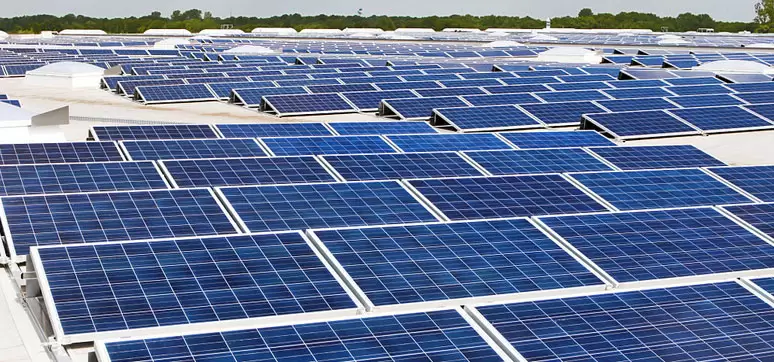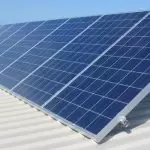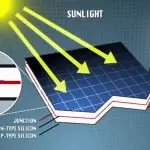Solar energy as a viable energy source is growing rapidly. Its growth actually outstrips the growth of other sources of energy, which isn’t very surprising when you think about it. After all, the energy comes from the sun and is virtually endless and clean. It doesn’t tax the environment and the amount of solar energy that hits the earth in one hour is enough to deal with energy needs around the globe for an entire year.
Post your Requirement
Solar panel arrays are very long-lasting. On an average, a solar panel array can last a quarter of a century or more. This means that whatever type of solar panel you choose now will affect the production of solar energy for you and the savings you make in the future. Therefore, you need to identify the right type of panel that suits your energy needs as well as your pocket. Solar efficiency and cost-effectiveness are the two main criteria that you’ll need to look at when deciding which type of panel works best for you.
Solar Efficiency
In order to make the right decision, the first thing you need to understand is what solar efficiency is. While the materials used to make solar panels and their designs may be different, the different types of solar panels have the same purpose – to generate electricity from solar energy. When exposed to photons from the sun, solar panels release electrons which are channelled into wires and then an inverter to generate electricity for your home and business.
Solar efficiency is the measurement used to determine how much electricity a panel can generate from the light that hits it. For most panels, this is generally between 9 and 20 percent, while the rest of the energy becomes heat and is lost. Despite these statistics, solar energy is fairly cost-effective.
Solar panel efficiency is different depending upon the panel types. Panel designs with higher solar efficiency can be more costly. When you’re considering what type of panel to invest in, you’ll need to look at your priorities in the long-term both in terms of efficiency and what suits your wallet.
Related Post: Top Reasons to Invest in Solar Energy this Year
Locate : Solar Panel Manufacturers in your area
Different Solar Panel Types
There are a wide range of solar panels available; they differ from each other in quality and design. The three broad categories that most solar panels come under are monocrystalline solar panels, polycrystalline solar panels and thin film solar panels. The first two utilize silicon while thin film solar panels make use of other photovoltaic substances and, therefore, their properties are different from the traditional panels. Let’s take an in-depth look at these three types.
1. Monocrystalline Solar Panels
These solar panels are considered the most efficient. The material used here is silicon and special techniques in manufacturing are used to make the silicon be as efficient as possible. In this type of panel, silicon ingots that are highly pure are utilized. These ingots are cut into thin wafers. The wafers are then arranged in a grid shape. The panel is a dark black in colour and the corners of each wafer in it are rounded. The unique look is easily recognizable.
Since the ingots used in monocrystalline panels are very pure, they generate electricity most efficiently. They generally have efficiency ratings at the higher end of the spectrum, around 21.5 percent. In addition, they don’t require much space and even in low light can work better than other panels. However, they are markedly more expensive than their less efficient counterparts, although the costs can vary depending upon the panel design and the manufacturer. Also, since the shape of the ingot is cylindrical, the manufacturing process generates more waste.
2. Polycrystalline Solar Panels
The manufacturing process for polycrystalline panels is very efficient which means that these type of panels are much cheaper than their monocrystalline counterparts. The panels are made of melted silicon cut into wafers that are perfect squares. The melting process utilizes pretty much everything so that very little waste is generated.
Suggested Post: Do solar panels work in Clouds, Shades or at Night
The efficiency of these panels ranges between 13 and 16 percent, which is fairly reasonable. However, their performance suffers in both low-light and high heat conditions. The panels also take up more room and not everyone is a fan of the shimmering blue colour.
3. Thin Film Panels
Unlike the other two categories, thin film panels don’t use silicon in their make-up; they are made up of different photovoltaic materials. Manufacturers deposit a thin layer of these materials over a substrate that gives them unique characteristics. The materials commonly used are amorphous silicon, cadmium telluride, organic photovoltaic cells or copper indium gallium selenide.
The panels aren’t as efficient as the silicon varieties, generally ranging from 15 to 16 percent efficiency. However, they are much easier to manufacture and the substrate used in their design can be flexible, which broadens the range of uses they can be put to. They also work well in high heat and low-light conditions. However, they take up a lot of space because of which they aren’t the best types for homes.
Now that you have a general idea of the different types of solar panels, you can decide which suits you best both in terms of cost and efficiency. Do some research and shop around because this is definitely a long-term investment.
Buy Cabinet hinges online at mccoymart.com Select from the top brands available at lowest price























Post A Comment